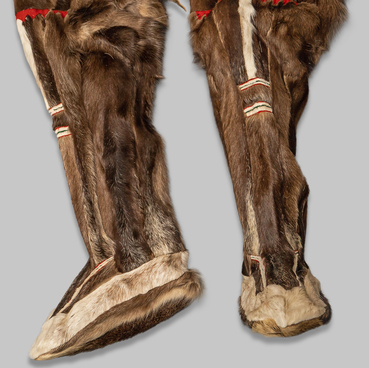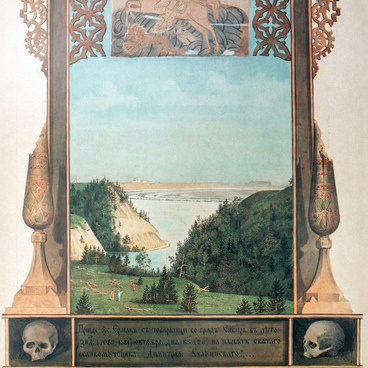The acinaces is a double-edged Sarmatian type iron sword. It is one of the first exhibits of the Tobolsk Provincial Museum. It was found accidentally near the town of Zavodoukovsk, Tobolsk province, in 1903. The acinaces is part of the so-called Scythian triad, i.e. a complex of items typical of the Scythian culture. It is not known exactly how it ended up in the Tobolsk province.
The acinaces is a stabbing weapon for hand-to-hand combat common among nomadic peoples during the Iron Age. It was distinguished from other types of swords by a short triangular blade up to 60 centimeters with a wide base and a thin tip. Despite the fact that the acinaces was described as a stabbing weapon, the weight of the blade was about two kilograms and allowed for strong slashing blows. The acinaces’ blade and hilt were usually forged from a single strip of metal, and sometimes from several strips. After that, they were connected by forging welding, with the crosshair and pommel attached in the same way.
The Tobolsk acinaces is unusual in that it has dales, i.e. thin longitudinal strips on the blade that reduce its weight. Initially, acinaci had no dales. The first swords with dales and stiffeners were found in the graves of the North Caucasian culture. They were dated to the 7th century BC.
Most often, acinaci were auxiliary weapons, since nomads preferred to shoot bows and throw javelins and spears. Short swords were wielded by members of the military aristocracy. Ordinary soldiers did not have them. The acinaces was worn on the belt on the right in a wooden scabbard with a special extension at the top for attaching to the belt. The scabbard was decorated with a bone tip and bronze or gold plates with images in the animal style. It was an ornamental style typical of the Scythian culture.
Most of the Scythians led a nomadic life. At the same time, they could travel long distances in a relatively short period of time. It is very difficult to distinguish their ancestors among the many tribes with a similar culture. The Scythian civilization flourished in the 7th century when the Scythians dominated not only the steppes of the Black Sea Region, but also the whole of Asia Minor where they created the Scythian state of Ishkuza. By the beginning of the 6th century, they were driven out of Asia Minor. Traces of the Scythians found in the Caucasus date back to the same time.
The acinaces is a stabbing weapon for hand-to-hand combat common among nomadic peoples during the Iron Age. It was distinguished from other types of swords by a short triangular blade up to 60 centimeters with a wide base and a thin tip. Despite the fact that the acinaces was described as a stabbing weapon, the weight of the blade was about two kilograms and allowed for strong slashing blows. The acinaces’ blade and hilt were usually forged from a single strip of metal, and sometimes from several strips. After that, they were connected by forging welding, with the crosshair and pommel attached in the same way.
The Tobolsk acinaces is unusual in that it has dales, i.e. thin longitudinal strips on the blade that reduce its weight. Initially, acinaci had no dales. The first swords with dales and stiffeners were found in the graves of the North Caucasian culture. They were dated to the 7th century BC.
Most often, acinaci were auxiliary weapons, since nomads preferred to shoot bows and throw javelins and spears. Short swords were wielded by members of the military aristocracy. Ordinary soldiers did not have them. The acinaces was worn on the belt on the right in a wooden scabbard with a special extension at the top for attaching to the belt. The scabbard was decorated with a bone tip and bronze or gold plates with images in the animal style. It was an ornamental style typical of the Scythian culture.
Most of the Scythians led a nomadic life. At the same time, they could travel long distances in a relatively short period of time. It is very difficult to distinguish their ancestors among the many tribes with a similar culture. The Scythian civilization flourished in the 7th century when the Scythians dominated not only the steppes of the Black Sea Region, but also the whole of Asia Minor where they created the Scythian state of Ishkuza. By the beginning of the 6th century, they were driven out of Asia Minor. Traces of the Scythians found in the Caucasus date back to the same time.

